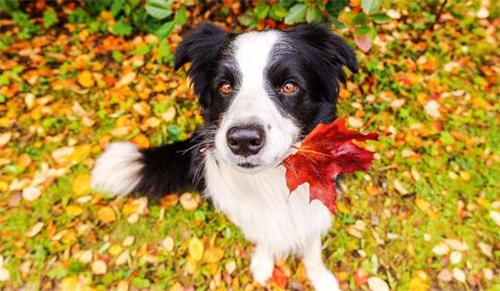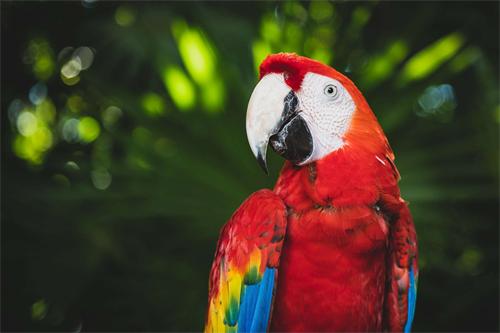Seasonal Pet Health Risks in Fall and Winter 2025: What Every Pet Owner Needs to Know

As the leaves change color in late summer and early fall, many pet owners may breathe a sigh of relief, assuming that parasite and allergy risks will subside with the falling temperatures. However, fall and winter present their own set of challenges for our animal companions. Climate trends for 2025, shifting weather patterns, and year-round parasite threats make vigilance more important than ever. Below, we explore the key health risks facing pets during the colder months—particularly allergies, ticks, and parasites—as well as some practical mitigation strategies.
Evolving Allergens and Environmental Irritants
As the seasons transition from summer to fall and winter, the types of allergens pets are exposed to often change significantly. Ragweed, mold spores, leaf decay, and late-blooming weeds become more prevalent outdoors, while indoor allergens like dust mites, pet dander, and airborne mold can reach higher concentrations as homes are closed and heating systems are running. These changes can even trigger seasonal allergy symptoms in pets that may seem unaffected in warmer months.
Parasites: Hiding But Not Gone
Many pet owners assume that fleas, ticks, and other external parasites disappear completely with cooler weather. In reality, while parasite activity may decrease during a cold snap, they often remain viable—hiding in leaf litter, in milder microclimates, or inside buildings with more stable temperatures. Some ticks become more active on unusually warm days, and flea infestations can persist in warm homes, where warmth allows them to thrive. Therefore, parasite risk remains a concern throughout the fall and even into the winter.
Cold, damp, and the stress of indoor living
The fall and winter seasons also bring environmental stressors that can exacerbate health problems. Exposing pets to cold, damp outdoor conditions can lead to problems like hypothermia and frostbite. Indoor heating systems dry out the air, irritating the skin, nasal passages, and respiratory system. Furthermore, the longer pets spend indoors, the more they risk being exposed to drafts, moisture trapped in corners, or mold. Combined with shorter daylight hours and changes in daily activities (less outdoor time, rolling in leaf piles, holiday travel, etc.), their immune systems and resilience may be compromised.
Increased Risk of Secondary Problems
The cold season often leads to an increase in secondary illnesses, as allergens and parasites can trigger persistent irritation or low-grade infections. Pets may scratch or bite constantly, causing broken skin that can harbor bacteria or yeast. Ear infections, especially in dogs, are exacerbated by moisture or the accumulation of allergens. Pets with joint problems may also experience increased stiffness or pain in cold weather. Finally, reduced activity can lead to weight gain, which can also put stress on joints and immune function.

Fall and Winter Allergies: What's the Difference and What to Watch Out For
Spring allergies are typically triggered primarily by tree pollen, while the following allergens emerge in fall and early winter:
● Ragweed, pigweed, and other late-season weed pollen (which can persist into fall in many areas)
● Mold spores thrive in damp leaf litter, gutters, basements, and decaying vegetation
● Dust mites and indoor allergens, especially when pets spend more time indoors and heating systems stir up particulate matter and dust
● Fungal spores and mold in damp corners, garages, or leaf litter
● Indoor chemical irritants, such as household cleaners, air fresheners, fireplaces, or heater exhaust
● Because many allergens are concentrated indoors or in microclimates (cold, damp areas), some pets who never exhibit outdoor seasonal allergies may begin to show symptoms in the fall/winter.
Ticks, Fleas, and Parasites in Fall and Winter: They Don't Go Away
A common misconception is that parasite threats disappear after the first frost. In fact, many pests either remain active during milder weather, retreat indoors, or reemerge early when conditions permit.
Tick Risks in Fall and Winter 2025
Ticks have a complex life cycle and may remain dormant over the winter. However, they still pose a threat in certain circumstances:
● In mild climates, ticks may remain active for longer periods, even into the winter.
● Ticks may survive indoors or in sheltered microclimates (such as in leaf litter, dense vegetation, or near buildings).
● Ticks can hitch a ride on rodents, wild animals, or birds that pass through pet areas.
Some tick species may become active again during the warmer months of late fall or early winter.
Tick-Borne Diseases
Ticks can transmit pathogens such as Lyme disease, Anaplasma, Ehrlichia, and Babesia. In some cases, ticks can also cause tick paralysis. Vigilance is crucial.
Removal and Precautions
l After walks or outdoor play, carefully inspect your pet's neck, ears, between toes, under the armpits, and around the tail.
● Using fine-tipped tweezers or an appropriate tick removal tool: Grasp the tick close to the skin and pull vertically upward (do not twist).
● Clean the area with disinfectant and monitor your pet for signs of illness over the next few weeks.
● In areas where tick paralysis is a concern, some veterinarians recommend freezing the tick rather than removing it directly.
Preventative Measures
● Continue or begin year-round tick prevention (topical or oral) as recommended by your veterinarian.
● Use a tick/flea collar when appropriate.
● If ticks are frequently present, consider treating your pet's environment (garden spray, diatomaceous earth, etc.).
● Reduce tick habitat: Mow the lawn, remove leaf litter, and trim bushes.
● Avoid letting your pet roam in dense brush or wooded areas without checking afterward.
Fleas and Flea Allergies
Fleas may not completely disappear in the winter, especially in indoor or heated homes. Some fleas can survive in carpets, pet bedding, or floor crevices.
Flea saliva is one of the most common allergens for many pets. Even a single flea bite can cause intense itching or allergic dermatitis. Therefore:
● Continue flea prevention year-round
● Vacuum frequently (especially under furniture, around edges, and around pet beds)
● Wash pet bedding in hot water
● Use a flea comb and treat your pet immediately upon seeing signs of fleas

Other Parasites and Internal Parasites
In addition to external parasites, fall and winter also present risks from internal parasites and vectors:
● Heartworms: In many areas, mosquitoes may persist into late fall, so if preventative measures are seasonal, ensure coverage throughout the risk period.
● Intestinal Worms: Wild animals and rodents can harbor worms that can be transmitted to pets, even in colder months.
● Mites, Lice, and Other External Parasites: Pets such as cats can carry ear mites or other parasites.
● Tick-Borne Pathogens: Ticks feeding near their hosts can transmit disease, even when tick activity is low.
Therefore, parasite control should remain a priority, even in colder months.
Why prevention and vigilance are more important than ever?
Given all these intertwined risks, fall and winter are not just a time to rest easy when it comes to your pet's health, but also a time for constant vigilance. Preventative measures become even more crucial: ongoing parasite control, managing the indoor environment (humidity, heating, ventilation), grooming to remove allergens, and closely monitoring your pet for early signs of problems. In 2025, with climate change (warmer autumn weather, earlier warm spells, or sudden cold snaps), many of the old "rules" about when parasites or cold damage are no longer a problem will no longer apply. Being proactive in fall and winter can help avoid painful, costly, or even life-threatening health issues later.
The fall and winter of 2025 will present familiar challenges as well as new surprises for pet health management. Allergies don't disappear with the frost, and neither do fleas, ticks, or parasites—especially in regions with mild and unpredictable winters. As a pet owner, adopting a proactive, year-round mindset, rather than focusing on the seasons, is the key to effectively combating overlooked threats. Close collaboration with your veterinarian, regular monitoring, and targeted preventative care will give your four-legged family member a good chance of comfort and health in every season.



